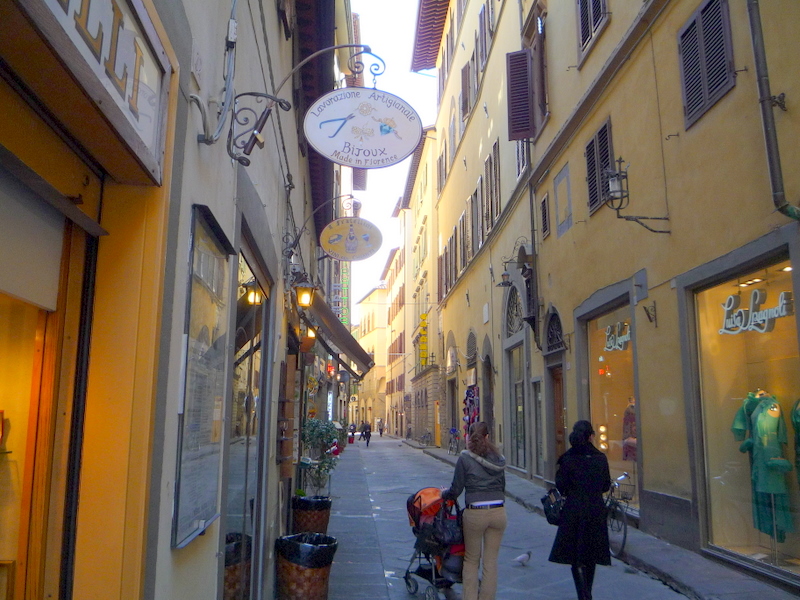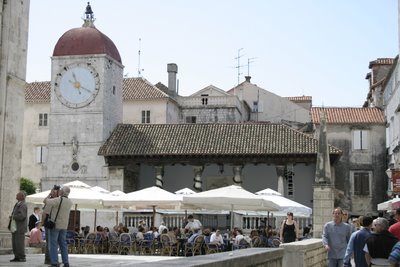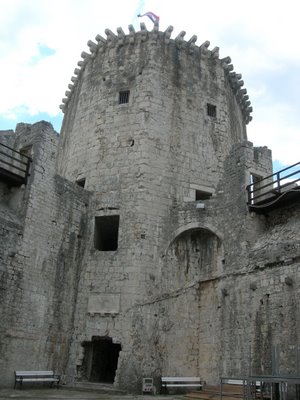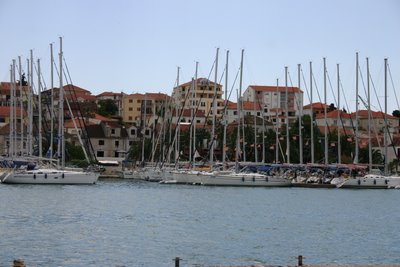The museum-town of Trogir is located on Croatia’s Dalmatian coast. Surrounded by a sparkling sea and 2300 years of history, this little town counts itself among the best preserved Romanesque-Gothic towns in Central Europe. Also known as the Stone Beauty, Trogir is situated a mere 20 km from the city of Split, making it a very popular tourist stop.
 Trogir was first settled by the Greeks around the 3rd century BC. They called the town Tragurion, which roughly translated as Goat Island. Since then many different cultures have come – the Romans, Venetians, the French led by Napoleon, Austrians, and of course the Croats -each leaving their imprint on the island. Together they’ve created a rich historic and cultural mosaic along the Adriatic.
Trogir was first settled by the Greeks around the 3rd century BC. They called the town Tragurion, which roughly translated as Goat Island. Since then many different cultures have come – the Romans, Venetians, the French led by Napoleon, Austrians, and of course the Croats -each leaving their imprint on the island. Together they’ve created a rich historic and cultural mosaic along the Adriatic.
A statue of St. John, Trogir’s patron saint, stands at the town’s northern entrance, welcoming visitors. Before the 19th century the entire islet was secured within city walls. Today only the medieval core, a UNESCO World Heritage Site, is fortified. Follow the tizzy of narrow lanes up to the main square, Ivana Pavla II, the heart of Trogir, and its most historic patch of land.
On one side of the square stands the 13th century St. Lawrence Church. This is a local landmark; its carved Roman portal, dating back to 1240, is one of the most prestigious works of art in Dalmatia. The elaborate portal displays Adam and Eve, sculpted to perfection, along with a number of saints and other biblical creatures. While most tourists enjoy the portal and move on, a walk inside the cathedral is highly rewarding, as it is known to hold some elaborate works of art.
 On the other side of the square is the town loggia. In medieval time the loggia served as a court, handing out sentences and deciding people’s fate. Today the murals on the loggia wall form a great backdrop to cafes and restaurants here. Next to the loggia is the bright blue Trogir Clock Tower, and completing the square are the Town Hall and the 15th century Cipiko Palaces, each holding treasures of their own.
On the other side of the square is the town loggia. In medieval time the loggia served as a court, handing out sentences and deciding people’s fate. Today the murals on the loggia wall form a great backdrop to cafes and restaurants here. Next to the loggia is the bright blue Trogir Clock Tower, and completing the square are the Town Hall and the 15th century Cipiko Palaces, each holding treasures of their own.
 Trogir is full of big and small structures holding on to moments of history and works of art. The Benedictine Nuns’ Monastery, for example, displays the marble relief of Kairos, the Greek God of Luck. While the Church of St. John the Baptist holds the Cipiko family tomb, which is decorated by an exquisite relief depicting the mourning of Christ. Depending on how much time you have, explore the churches and galleries on the islet, and indeed the Trogir Museum, to uncover the town’s hidden treasures. And between the landmarks, be sure to take in the town’s ancient core. An air of medieval romance still clings to the stones of these narrow streets. Follow the lanes as they wind around the town walls and relive their rich history.
Trogir is full of big and small structures holding on to moments of history and works of art. The Benedictine Nuns’ Monastery, for example, displays the marble relief of Kairos, the Greek God of Luck. While the Church of St. John the Baptist holds the Cipiko family tomb, which is decorated by an exquisite relief depicting the mourning of Christ. Depending on how much time you have, explore the churches and galleries on the islet, and indeed the Trogir Museum, to uncover the town’s hidden treasures. And between the landmarks, be sure to take in the town’s ancient core. An air of medieval romance still clings to the stones of these narrow streets. Follow the lanes as they wind around the town walls and relive their rich history.
 Outside the old core, the history lesson continues with the Kamerlengo Fortress. Standing at the edge of the waterfront, this 15th century Venetian defense fortification today hosts summer concerts and other cultural events. For a small entry fee (15 Kuna) you can scale the fortress and take in spectacular views of Trogir. The smaller St. Mark’s Tower is situated just a few paces away.
Outside the old core, the history lesson continues with the Kamerlengo Fortress. Standing at the edge of the waterfront, this 15th century Venetian defense fortification today hosts summer concerts and other cultural events. For a small entry fee (15 Kuna) you can scale the fortress and take in spectacular views of Trogir. The smaller St. Mark’s Tower is situated just a few paces away.
 Once you’ve covered the sites, there is but one thing to do: lounge on the riva. While snazzy boats float in and out of the harbour, find a seat under the sweeping palms, order a cup of coffee and bask in the wonder of the stone beauty.
Once you’ve covered the sites, there is but one thing to do: lounge on the riva. While snazzy boats float in and out of the harbour, find a seat under the sweeping palms, order a cup of coffee and bask in the wonder of the stone beauty.
Written by Neha Puntambekar for EuropeUpClose.com

Peter Montgomery
Monday 31st of August 2009
I was wondering what the name of the fortress was used in Sinbad / Zeppelin and Warlords of Atlantis In 1978 In Malta.